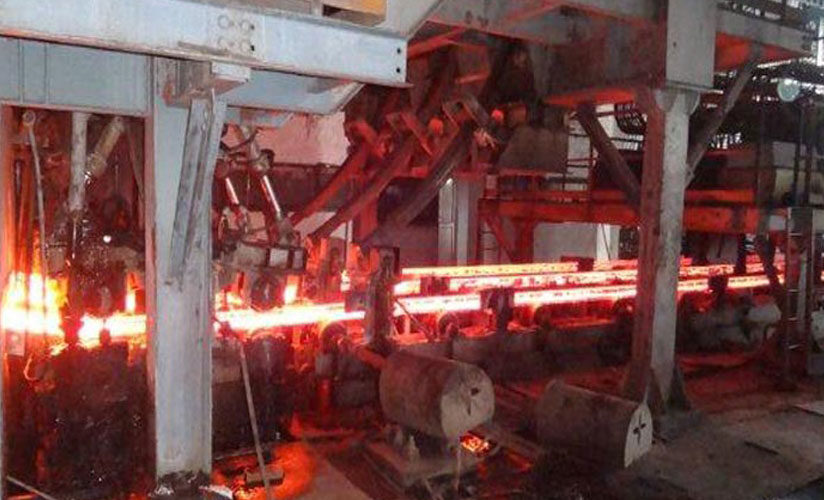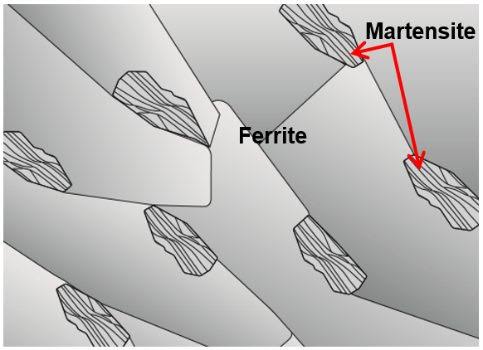Meta TechX Engineers : Breakouts are a common occurrence in Continuous Casting Machines (CCM) used in the metal industry. These breakouts can lead to production downtime, material wastage, and safety hazards. It is crucial to understand the different types of breakouts, their possible causes, and effective ways to minimize them. In this article, we will delve into the world of breakout in CCM.
When it comes to CCM breakouts, it is essential to address the specific types that can occur. By exploring the reasons behind each type of breakout, Meta TechX Engineers offer valuable insights into minimizing their occurrence. This article draws upon our experience and expertise in the metal industry, establishing our authority and trustworthiness in providing reliable information. Meta Blogs
Types of Breakout in CCM
1- Mold Breakout: One of the most common types of breakouts in CCMs is mold breakout. This occurs when the casting strand ruptures the mold wall, causing molten metal to escape uncontrollably. Mold breakouts can be attributed to various factors, including:
•High casting speed: When the casting speed exceeds the optimum limit, the molten metal exerts excessive force on the mold, leading to a breakout.
•Poor mold lubrication: Insufficient or improper lubrication can result in increased friction between the mold and the casting strand, causing breakouts.
•Improper mold tapering: If the mold is not tapered correctly, it can create a tight space for the casting strand, leading to mold breakout.
2- Nozzle Breakout: Another common type of breakout in CCM is nozzle breakout. This occurs when the nozzle, which controls the flow of molten metal, fails, causing the metal to escape erroneously.
Nozzle breakouts can be caused by:
•Inadequate nozzle flow control: If the nozzle is not properly adjusted to regulate the flow of molten metal, it can lead to excessive or insufficient metal flow, resulting in breakouts. •Nozzle blockage: When the nozzle gets clogged due to impurities or solidified metal, it hampers the smooth flow of molten metal, increasing the likelihood of breakouts. •Inconsistent temperature: Fluctuations in the nozzle’s temperature can cause the metal to solidify or become excessively viscous, leading to breakouts.
3- Submerged Entry Nozzle (SEN) Breakout: SEN breakout occurs when the submerged entry nozzle, which introduces molten metal into the mold, experiences a failure.
Possible causes of SEN breakout include:
•Incorrect alignment: If the SEN is not correctly aligned with the mold, the metal flow can become disrupted, resulting in breakouts.
•SEN clogging: Impurities or solidified metal in the SEN can obstruct the smooth flow of molten metal, leading to breakouts.
•Improper SEN immersion depth: The SEN’s immersion depth must be carefully calibrated to ensure optimum metal flow. Deviations from the recommended depth can contribute to SEN breakouts.
Minimizing Breakouts in CCM
Minimizing breakouts in CCMs is crucial for maintaining smooth operations and maximizing productivity. Here are some effective strategies to minimize breakouts:
(1)- Regular maintenance and inspection: Implement a proactive maintenance program to regularly inspect and maintain critical components such as molds, nozzles, and SENs. Detecting and addressing potential issues in advance can help prevent breakouts.
(2)- Optimize casting parameters: Adjusting casting parameters such as casting speed, flow control, and temperature can significantly reduce the occurrence of breakouts. Implementing real-time monitoring systems can aid in identifying any deviations from optimal casting conditions.
(3)- Improve mold lubrication: Ensure proper lubrication of molds to reduce friction between the mold and the casting strand. This will minimize the risk of mold breakouts and enhance overall casting performance.
(4)- Train operators and implement standard operating procedures: Provide comprehensive training to CCM operators on the correct operation and maintenance procedures. Establish and enforce standard operating procedures to ensure consistent and safe practices.
(5)- Control impurities: Implement rigorous quality control measures to minimize impurities in the molten metal. Regularly monitor and analyze the composition of the metal to prevent nozzle and SEN blockages.
Conclusion : Understanding the different types of breakouts in CCM, their causes, and effective strategies to minimize them is crucial for a successful and efficient metal casting operation. By addressing mold breakouts, nozzle breakouts, and SEN breakouts, while implementing proper maintenance, optimizing casting parameters, and controlling impurities, engineers can significantly reduce the occurrence of breakouts.
Minimizing breakouts not only improves productivity but also enhances safety and reduces material wastage, further establishing trust and confidence in the metal industry.



